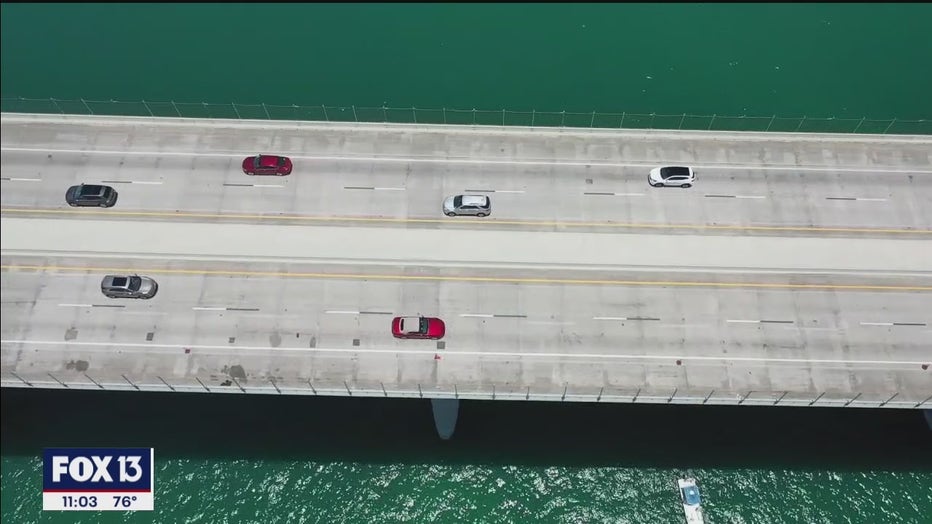Safety of Bay Area bridges monitored using new technology
TAMPA, Fla. - Cars drive over hundreds of thousands of bridges daily that develop issues beneath the surface, so researchers from Tampa Bay and central Florida are teaming up to develop new technology to be more proactive about bridge repairs.
Bridges are the backbone of roadways, so traffic stops when problems pop up.
"In order to inspect the bridges, the lanes are closed. The bridges are closed or segments of the roads are closed," said Necati Catbas, Ph.D., a professor of structural engineering at the University of Central Florida.
Catbas and the University of South Florida’s Rasim Guldiken, Ph.D., are working together to keep drivers moving and create a better way to help bridge inspectors.
"Currently the cars are computers on wheels, right? So what we are working on for this particular project is using some type of sensors and trying to detect what is the status of the bridges by simply driving on it," said Guldiken, an associate professor, mechanical engineering
Guldiken said inspections are mainly on the surface, so their goal is to find what eyes and ears can’t pick up. He said their technology would mount to a vehicle that could be driven across a bridge and analyzed.
"The technology that we are looking at if you will is like seeing inside of the concrete as opposed to the surface of it. So that’s the advantage of it we have," sad Guldiken.
RELATED: Behind the scenes of building new 8-lane span for Howard Frankland Bridge

Bridge safety was on display Wednesday when a pedestrian bridge collapsed in Washington D.C., injuring five people. Researchers said their machines would scan for and detect defects on major bridges that handle cars before the issues snowball.
"Right now, the bridges are inspected every two years by inspectors, but with this technology, the frequency can increase," said Catbas. "The utilization of the technology can be very quick, and we can detect those problems without waiting two years for the regular inspection period."
It’s a two-year project they plan to test locally to help the country.
"We have so many in Florida. We have close to 13,000 bridges. So it is kind of difficult to inspect all of them, but we may be able to say ‘This bridge may be OK for now, but you may want to focus your efforts on these bridges,’" said Guldiken.
The team is also working with students on the project, and they are getting help from the state and the federal government through the U.S. Department of Transportation with a total of $1.2 million in grant money.


